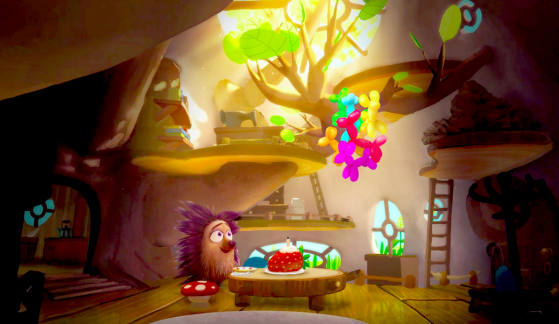New introductions, new content take VR beyond novelty.
By Kathleen Maher
VR is coming! VR is coming! and Oculus hopes to be among the winners as new headsets fight it out for customers’ attention. As a platform, Oculus is working on two fronts, hardware and software, and at this year’s Oculus Connect conference, the developer community had new announcements on both fronts.
Medium for true Virtual Reality Paint
Oculus doesn’t see itself as just another not-so-pretty headset. Nor does it see virtual reality as solely a gamer’s medium, so along with new games, and a VR movie/story about a lonely hedgehog called Henry, Oculus introduced Medium, its new sculpting tool. Oculus CEO Brendan Iribe called Medium Oculus’ art tool. It enables users to extrude shapes—like clay—and then sculpt them to add globs, etc. I know this because I watched the video. It certainly looks like fun. The video shows people happily hacking away at their creations with the Oculus hand controls and almost dancing in space. However, reports from people who have tried it say the user interface tends to require people to stand in place and use their arms to reach, grab, twist the shapes. Oculus’ promotional video highlights the experiences of artists, sculptors, and animators, who certainly did seem to enjoy themselves. Also interesting, the people in the video think of themselves as non-digital artists, and that’s what Oculus is getting at: VR can actually bring you closer to the real world in your interactions with digital elements.

The reviews are mixed, but this is a product category just being born. The HTC Vive also has a paint program called Tilt Brush, which in demonstrations is more of a paint program that lives in a 3D world. Argue all you like, however, the ability to paint the world around you or sculpt a creature are both creative applications that give VR more breadth for applications and a wider reach for people who like the idea of visiting digital worlds, but who don’t necessarily want to shoot or blow up everything and everyone they find there.
People who have tried out both apps note that Tilt Brush encourages players to walk around their work, to reach, and crouch, and physically interact. It is a more like painting with light. As a sculpting tool, Medium requires a little more thinking about how to put it to work because it has its origins in 3D modeling tools. The comparison is more akin to Maya and Zbrush.
A similar tool called VRClay has been developed by Ondrej Jamriska and Vojta Krs of the Czech Republic. It has basic sculpting tools and enables people to create 3D models using the Razer Hydra as an input tool. It has now been released as a beta. So far, the tool is limited in its ability to take over where the 3D modelers have left off, but it is promising. The developers say they have written the tool in C++ from the ground up, focusing on performance. They are using a custom geometry engine for the dynamic surface meshing. So far, the only input tools it supports are Razer Hydra controllers, but they promise to add more support in the future.
VRClay is a Windows-only tool at the moment. VRClay was originally developed as Krs’s thesis project, with Jamriska as supervisor on the project. Krs is a graduate student at Purdue University, and Jamriska is a research fellow in the Department of Computer Graphics and Interaction at CTU (Czech Technical University) in Prague. In demos, the tool has basic tools to work with primitives. This early version can output to OBJ, meaning creations can be printed on a 3D printer or they can be imported into programs supporting OBJ. People are also making objects and bringing them into Unity to add to game content or just to play with.
Oculus isn’t talking about output formats for Medium, but it’s an obvious question. Can the creations live outside VR? This reminds us of Autodesk’s Memento tool, which can make 3D models from photos because it, too, adds an element of sculpting. Models can be refined with sculpting tools that Autodesk has adapted from its Mudbox technology. Autodesk has added support for the all-important FBX format so that models can be imported into content creation tools like Maya, Max, Mudbox, Cinema 4D, Modo, etc.
What do we think?
It’s not magic—there’s still work and talent required—but more people are getting the ability to create 3D content for play or for business. For years, we’ve been assured that as young people grow up using 3D tools, they’ll be creating 3D models, etc. We’re seeing that happen, but more important, we’re seeing people take advantage of new technology to change the tools so that they’re easier and more fun.





